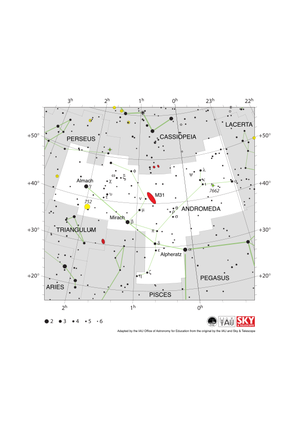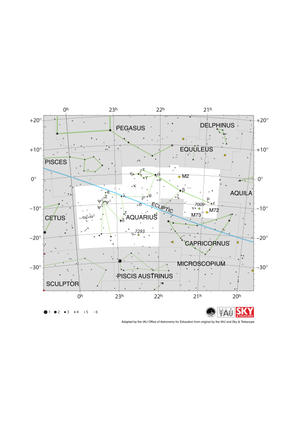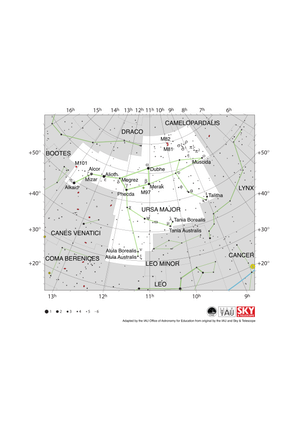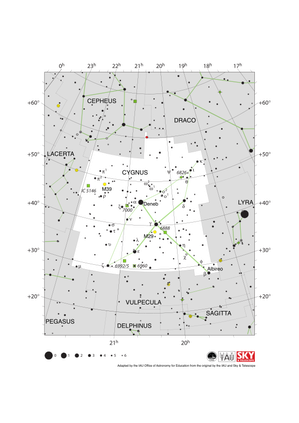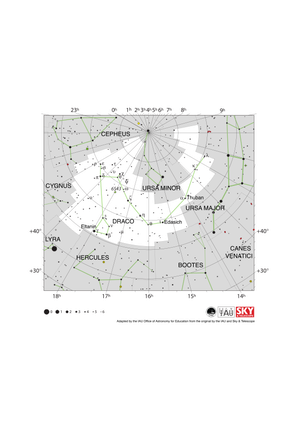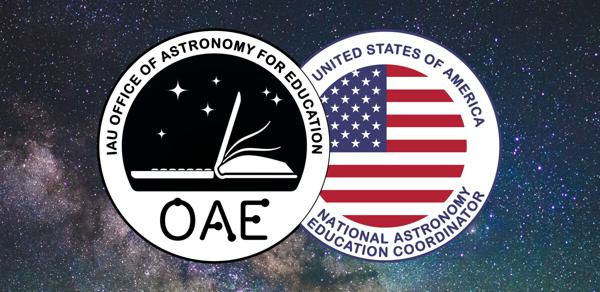Glossarbegriffe: Planetarischer Nebel
Description: Ein planetarischer Nebel ist eine Wolke aus Gas und Staub, die aus den äußeren Schichten eines sterbenden Sterns stammt und sich in das interstellare Medium ausdehnt. Das Gas wird durch das ultraviolette Licht des sterbenden Sterns angeregt und leuchtet mit einem Emissionslinienspektrum. Einige planetarische Nebel sind annähernd kugelförmig und können in einem kleinen Teleskop wie ein Planet aussehen - daher der Name. Aber sie haben nichts mit Planeten zu tun. Andere planetarische Nebel sind nicht kugelförmig. Das ist auf die Rotation des Sterns, sein Magnetfeld oder einen Begleitstern zurückzuführen.
Zugehörige Glossarbegriffe:
See this term in other languages
Term and definition status: The original definition of this term in English have been approved by a research astronomer and a teacher The translation of this term and its definition is still awaiting approval
The OAE Multilingual Glossary is a project of the IAU Office of Astronomy for Education (OAE) in collaboration with the IAU Office of Astronomy Outreach (OAO). The terms and definitions were chosen, written and reviewed by a collective effort from the OAE, the OAE Centers and Nodes, the OAE National Astronomy Education Coordinators (NAECs) and other volunteers. You can find a full list of credits here. All glossary terms and their definitions are released under a Creative Commons CC BY-4.0 license and should be credited to "IAU OAE".
If you notice a factual or translation error in this glossary term or definition then please get in touch.
Related Diagrams
Andromeda Constellation Map
Bildnachweis: Adapted by the IAU Office of Astronomy for Education from the original by IAU/Sky & Telescope
License: CC-BY-4.0 Creative Commons Namensnennung 4.0 International (CC BY 4.0) icons
Aquarius Constellation Map
Bildnachweis: Adapted by the IAU Office of Astronomy for Education from the original by IAU/Sky & Telescope
License: CC-BY-4.0 Creative Commons Namensnennung 4.0 International (CC BY 4.0) icons
Ursa Major Constellation Map
Bildnachweis: Adapted by the IAU Office of Astronomy for Education from the original by IAU/Sky & Telescope
License: CC-BY-4.0 Creative Commons Namensnennung 4.0 International (CC BY 4.0) icons
Cygnus Constellation Map
Bildnachweis: Adapted by the IAU Office of Astronomy for Education from the original by the IAU and Sky & Telescope
License: CC-BY-4.0 Creative Commons Namensnennung 4.0 International (CC BY 4.0) icons
Draco Constellation Map
Bildnachweis: Adapted by the IAU Office of Astronomy for Education from the original by the IAU and Sky & Telescope
License: CC-BY-4.0 Creative Commons Namensnennung 4.0 International (CC BY 4.0) icons
